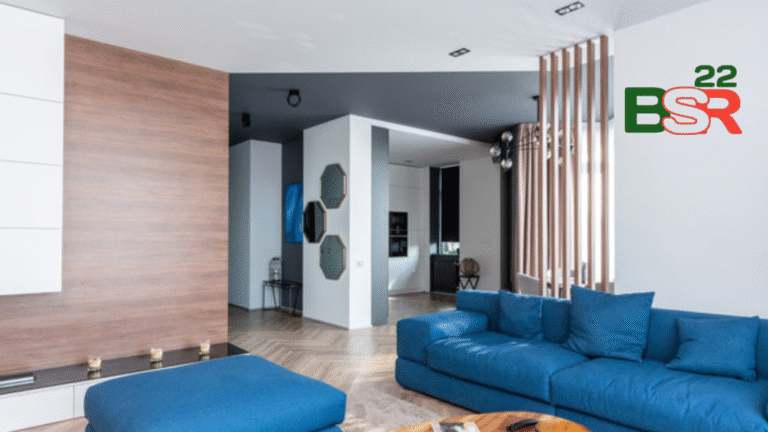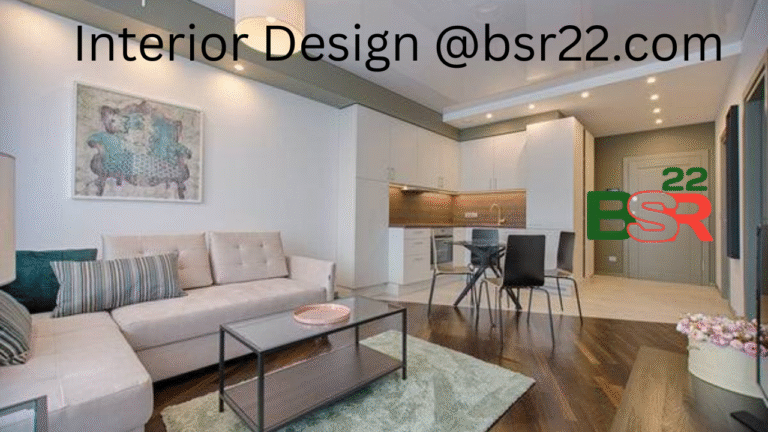
Designing a seamless interior is all about creating visual harmony and flow throughout your living space. Whether you’re decorating a compact apartment or a spacious home, the goal is the same: make the entire environment feel unified, comfortable, and aesthetically pleasing without overwhelming the senses.
Many people believe interior design is all about expensive furniture, intricate details, and trend-following. But true seamless design is based on consistency, intention, and a few strategic decisions. In this detailed guide, we’ll explore 8 expert-backed tips on how to design seamless interiors easily, with actionable steps to transform your space.
Table of Contents
ToggleWhy Seamless Interiors Matter
Before diving into the tips, it’s important to understand why seamless interiors are so valuable:
-
Improved Flow: A well-designed interior guides you smoothly from room to room.
-
Visual Harmony: Repetition and consistency reduce visual noise and clutter.
-
Functional Comfort: Seamless design isn’t just about looks — it also improves how a space is used.
-
Timeless Aesthetic: Instead of chasing trends, seamless interiors offer a lasting, adaptable style.
With that foundation in mind, let’s explore how to achieve this in your own space.
1. Start With a Unified Color Palette
Color is one of the most powerful tools in interior design. It sets the tone, creates mood, and influences how people feel in your home. Using a consistent color palette across all rooms is the first step toward creating a seamless look.
How to Choose a Cohesive Color Scheme:
-
Pick a Base Color: Choose a neutral base like white, beige, gray, or cream. Neutrals work well as wall colors and larger furniture pieces.
-
Add Complementary Shades: Choose two or three accent colors that complement your base. These can appear in throw pillows, rugs, curtains, or art.
-
Stick to Undertones: Keep the undertones consistent. If you choose cool undertones (like blue-gray), don’t mix in warm undertones (like yellow-beige).
Bonus Tip:
<span style=”font-family: ‘times new roman’, times, serif; font-size: 14pt;”>Use the same color in varying shades or tints throughout your home. This technique, known as monochromatic variation, adds depth while maintaining unity.
2. Choose Consistent Flooring
Your floors connect every room, often more visibly than walls. Inconsistent flooring materials can disrupt flow and make spaces feel disconnected.
Flooring Tips for Seamless Design:
-
Use the Same Material: If possible, choose one flooring material (like hardwood or luxury vinyl) for the majority of your home.
-
Coordinate Tile Colors: For areas that require tiles (like bathrooms and kitchens), select shades that complement the main flooring.
-
Limit Transitions: Minimize the use of floor borders, thresholds, or drastically different floor styles that break visual continuity.
Bonus Tip:
Rugs can be used to add texture and warmth, but make sure their styles align with the overall palette and theme.
3. Match Architectural Details
Seamless interiors aren’t just about furniture or wall colors—they also rely on architectural consistency. Elements like doors, moldings, trims, and baseboards can either unify or divide a space.
How to Create Consistency in Architecture:
-
Repeat Design Elements: Use similar styles of door and window frames throughout.
-
Maintain Finish Consistency: Stick to a single paint finish or wood stain for trim and molding.
-
Coordinate Ceiling Details: If you’re adding crown molding or beams, keep the design and material consistent across rooms.
Bonus Tip:
White or off-white trims and ceilings can tie together spaces and enhance the feeling of airiness.
4. Repeat Design Elements and Materials
Repetition is a key principle in design. Repeating certain elements creates visual rhythm and predictability, which the human eye finds satisfying.
What to Repeat for Seamless Interiors:
-
Hardware Finishes: Use the same or similar finishes (e.g., brushed brass, matte black) on door handles, faucets, and lighting.
-
Textile Patterns: If you love a certain pattern (stripes, florals, or geometrics), incorporate it in varying forms — on cushions, rugs, or curtains.
-
Furniture Materials: Choose consistent wood tones or metal finishes across rooms.
Bonus Tip:
Use matching lamps, side tables, or wall art frames to further reinforce unity.
5. Create Visual Flow With Smart Furniture Placement
Furniture arrangement can make or break your interior layout. Seamless design requires that furniture not only looks good but also supports easy movement and natural flow.
Placement Strategies:
-
Plan Open Pathways: Ensure that people can walk comfortably from one space to another without obstruction.
-
Align Layouts: In open-concept homes, align furniture with architectural lines (like beams or walls) to create invisible boundaries between zones.
-
Anchor With Rugs: Use area rugs to define sections like living areas or dining spaces without breaking flow.
Bonus Tip:
Invest in multi-functional furniture (like ottomans with storage or modular sofas) to keep spaces efficient and clutter-free.
6. Blend Open and Closed Spaces Naturally
Modern homes often feature open-plan designs. To maintain seamless flow, it’s crucial to balance openness with subtle separations.
How to Zone Without Walls:
-
Use Furniture as Dividers: Back a sofa with a console table to subtly separate living from dining spaces.
-
Create Color Bridges: Use similar colors in adjacent spaces to create a sense of connection.
-
Lighting Layers: Define different areas with pendant lights, floor lamps, or chandeliers without building walls.
Bonus Tip:
If you’re using different paint shades in connected rooms, make sure they’re in the same tonal family or gradient.
7. Stick to a Defined Interior Style
Trying to mix too many design styles can lead to a chaotic or disjointed look. For truly seamless interiors, pick one core aesthetic and build around it.
Popular Interior Design Styles:
-
Scandinavian: Clean lines, light woods, soft neutrals.
-
Minimalist: Less is more, neutral palette, open space.
-
Modern Farmhouse: Rustic textures, warm woods, cozy accents.
-
Mid-Century Modern: Sleek furniture, bold colors, vintage feel.
-
Bohemian: Eclectic but coordinated, natural elements, earthy tones.
How to Stay Consistent:
While it’s okay to blend styles slightly, make sure your main rooms reflect a shared design language. Use accessories (pillows, art, plants) to bring in personality without losing cohesion.
8. Keep Decor Balanced and Intentional
Clutter and mismatched decor items are the enemies of seamless design. This doesn’t mean your space should feel sterile — just curated and intentional.
Tips for Balanced Decor:
-
Edit Your Collection: Don’t display everything at once. Rotate decor seasonally or based on mood.
-
Group Items: Display items in threes or odd numbers, using symmetry and variation in height and shape.
-
Let Rooms Breathe: Leave some empty wall space and tabletop surface to avoid overcrowding.
Bonus Tip:
Invest in quality over quantity. A few meaningful or well-made decor pieces make a bigger impact than a lot of cheap or trend-based items.
Bonus: Use Lighting to Tie Everything Together
Lighting is often underestimated in interior design, but it plays a huge role in making a space feel seamless.
Lighting Tips for Seamless Interiors:
-
Layer Your Lighting: Use ambient (ceiling lights), task (table lamps), and accent (spotlights or wall sconces) to create depth.
-
Choose Consistent Fixtures: Select similar shapes or materials for light fixtures across different rooms.
-
Adjust Color Temperatures: Stick to one type of bulb color (warm white, soft daylight) for uniform light
Summary.
Creating seamless interiors isn’t about strict rules or expensive upgrades. It’s about making deliberate choices that guide the eye, encourage movement, and build an emotional connection between different parts of your home.
By focusing on consistency in color, materials, layout, and lighting, you can design a home that feels whole, balanced, and effortlessly beautiful. Whether you’re styling a small studio or a multi-room residence, applying these tips will help you build a cohesive space that stands the test of time.




